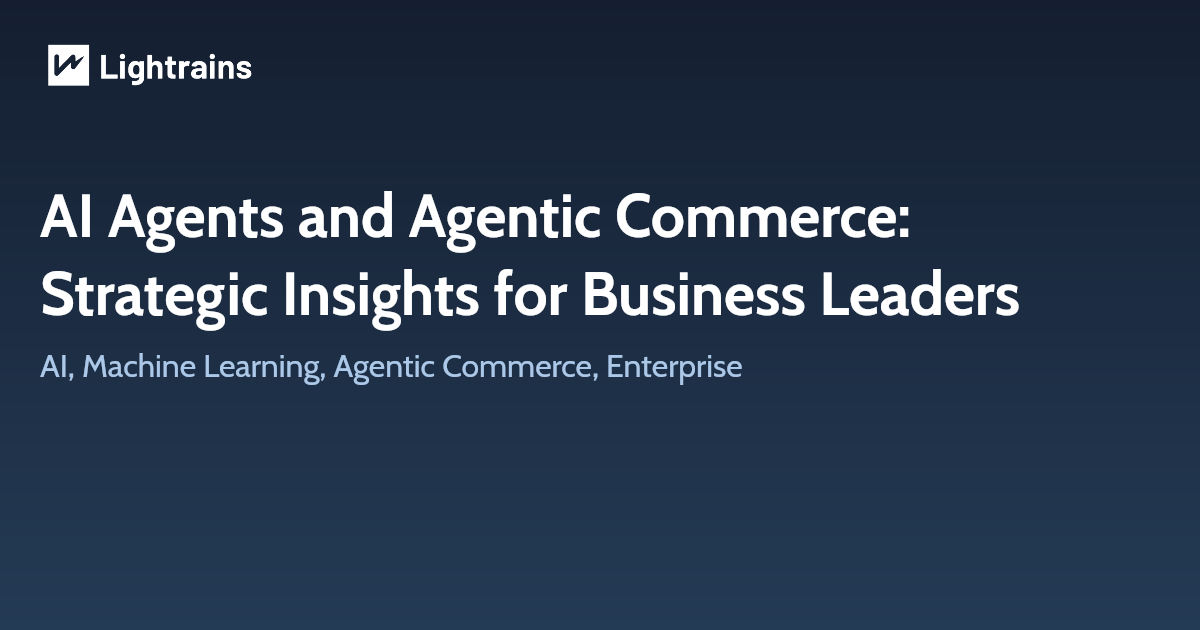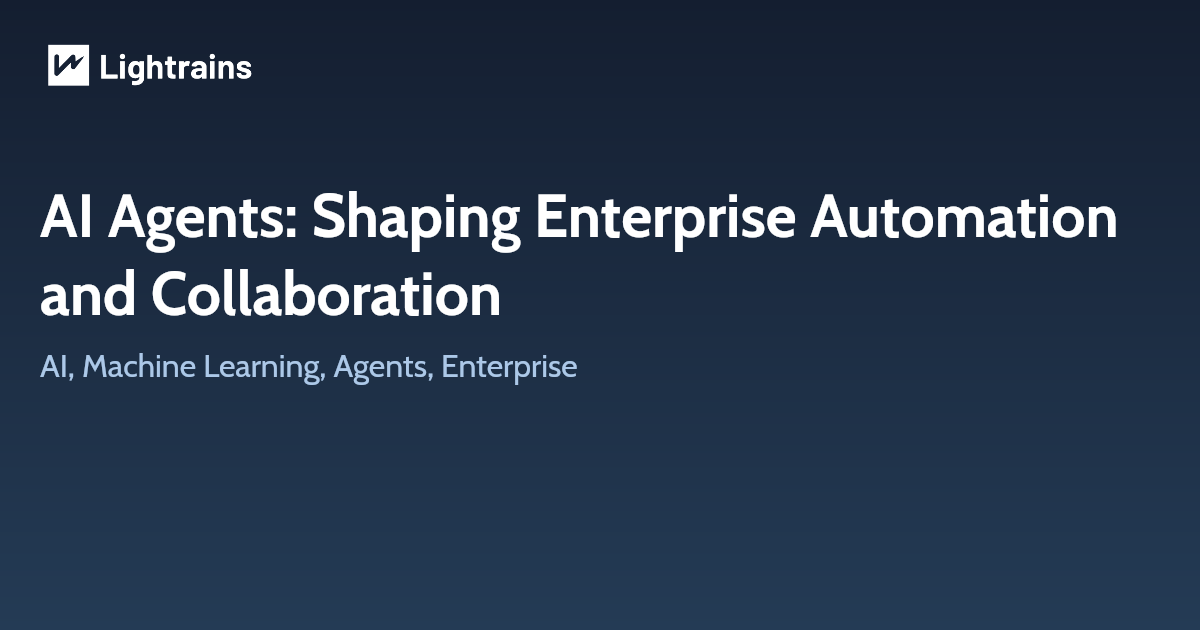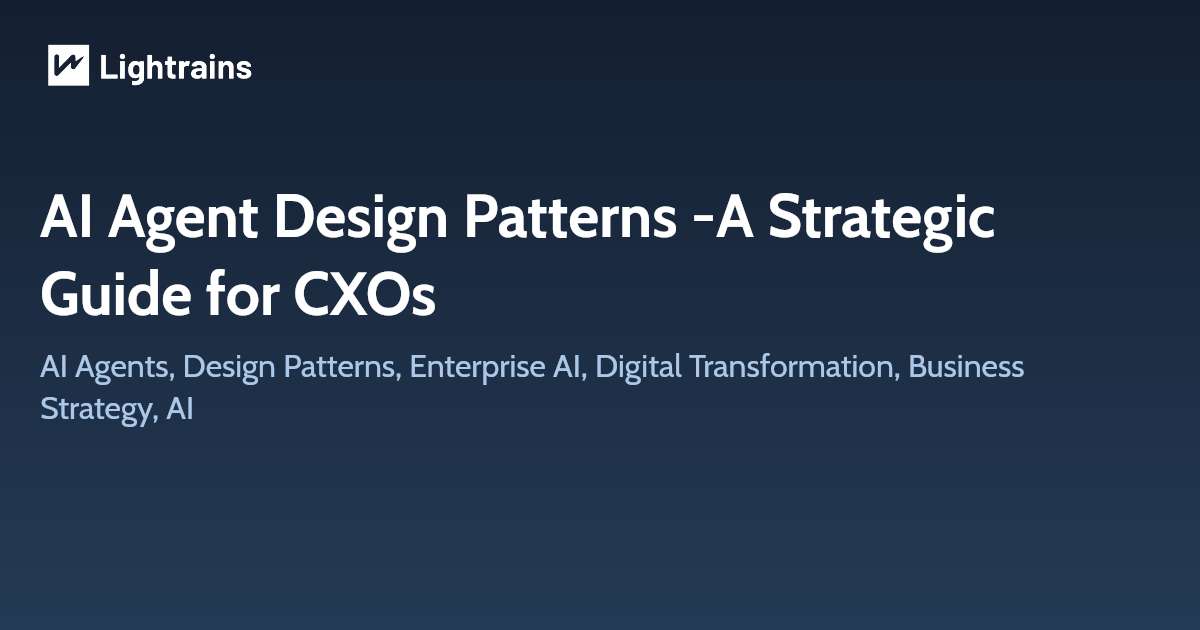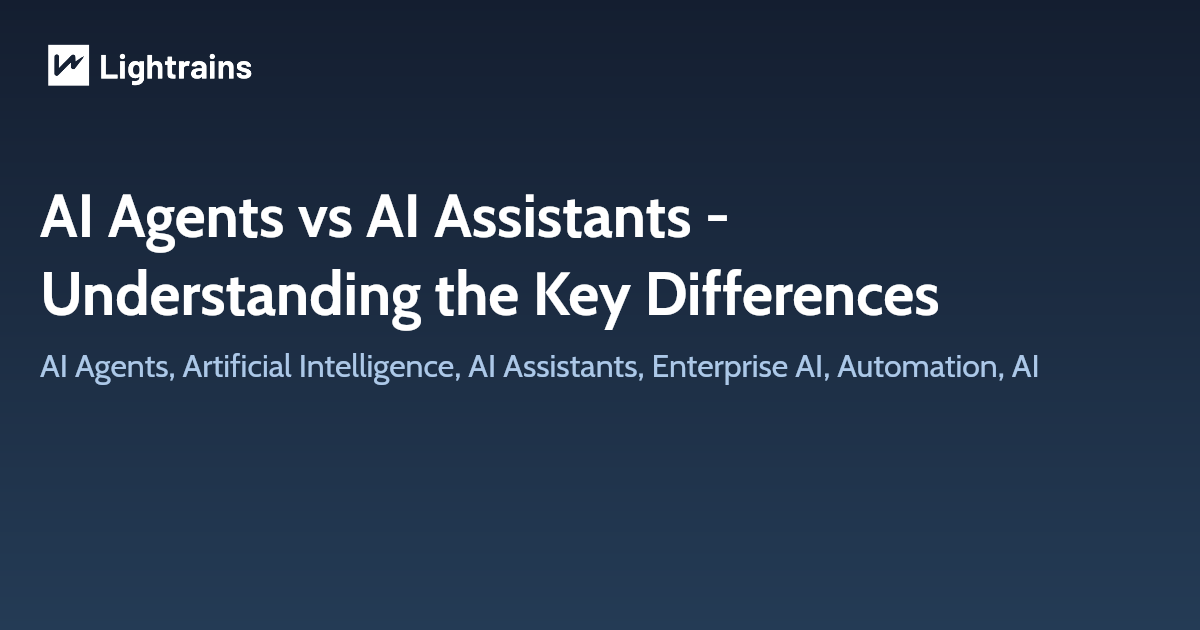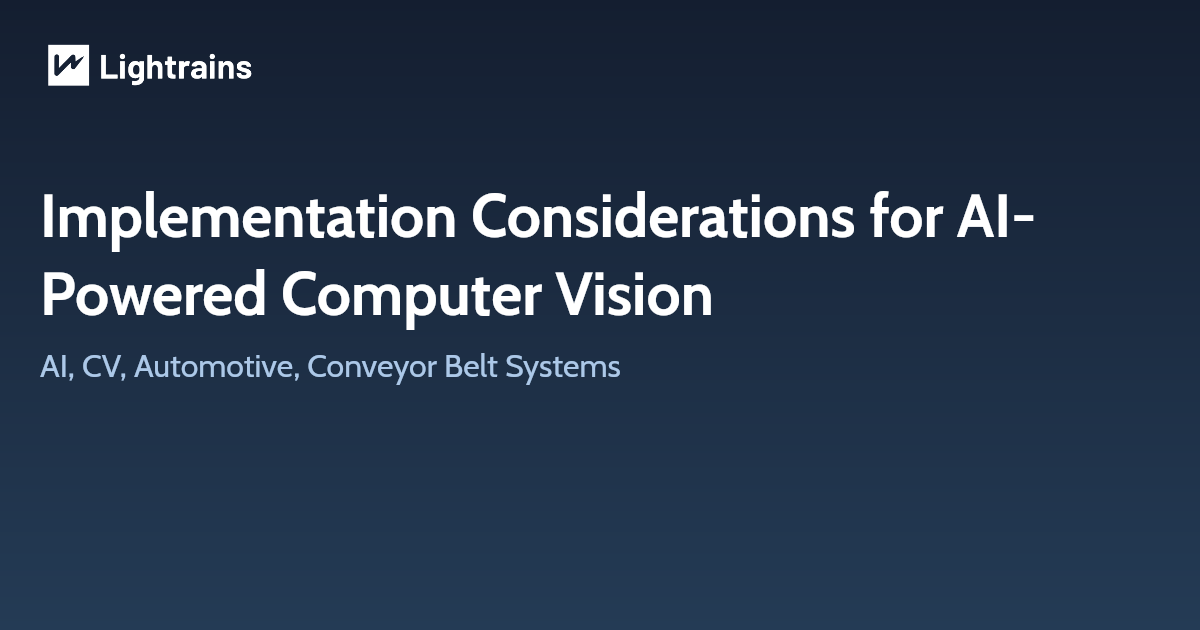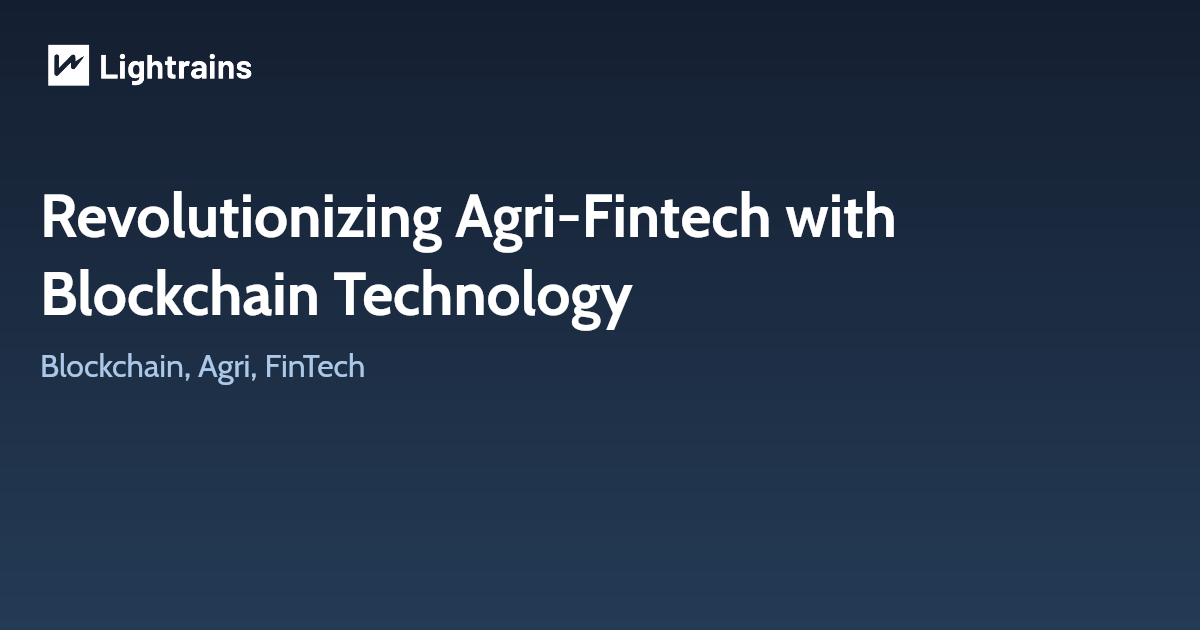
AI agents are moving into the center of enterprise transformation. Organizations are no longer asking whether AI can assist teams; they’re asking how AI can automate entire workflows, reduce operational load, and deliver decisions with reliability and speed. At Lightrains, we help enterprises build these agent-driven workflows end-to-end through our AI & Machine Learning consulting, secure integrations, and scalable system architectures.
This article reframes the OpenAI Agent Guide for business leaders seeking to understand not the code but the strategy.
What Is an AI Agent?
An AI agent is software that observes, reasons, and acts autonomously. AI agent is a system that performs tasks independently on your behalf, making decisions using its available tools, knowledge, and goals.
For enterprise leaders, this means an AI agent becomes a digital employee capable of interpreting requests, retrieving information, and performing actions across internal systems. At Lightrains, we integrate agents into real systems through secure APIs, cloud environments, and data pipelines areas where our general consulting services provide structured guidance.
The Core Components of an Enterprise AI Agent
1. The Brain: Large Language Models
The reasoning engine of an agent determines how reliably it executes workflows. Start with a powerful model like GPT-4 to validate your agent’s logic before optimizing.
For enterprises, this ensures:
- Strong decision-making during the testing phase
- Fewer edge cases and failures
- Predictable behavior as workflows scale
Lightrains supports organizations in selecting, integrating, and benchmarking LLMs through our AI engineering and offshore AI team solutions.
2. The Hands & Eyes: Tools and Integrations
Agents use tools to read documents, browse systems, gather data, and perform tasks.
In practice, enterprise agents rely on secure integrations into systems such as:
- CRMs
- Internal dashboards
- Knowledge bases
- Cloud environments
- Blockchain networks
- API-driven microservices
This is where Lightrains’ strengths in cloud automation, API engineering, and backend systems become essential.
3. The Instructions: Structure and Governance
Agents need unambiguous, structured rules.
Good instructions define:
- How decisions should be made
- What actions are allowed
- When escalation is required
- How to handle uncertainty
For enterprises, this is your AI governance layer. Lightrains adds additional safety layers, including audit logs, security boundaries, cryptographic verification (leveraging our blockchain expertise), and compliance logic.
Why Enterprises Are Moving Toward AI Agents
Operational Efficiency
AI agents take over time-consuming tasks such as support resolution, sales qualification, knowledge retrieval, compliance checks, and daily reporting. What used to involve multiple manual steps becomes a single autonomous workflow. Through our experience building platforms like StoryBee, we see firsthand how automation reduces cost and improves reliability.
Faster Decisions at Every Level
Agents can analyze documents, search internal systems, and access real-time data. When combined with strong LLM reasoning, this produces faster, more consistent outcomes. This is reinforced by our work in React and Next.js engineering where multi-system dashboards power real-time insights.
Scalable Without Growing Headcount Proportionally
Once deployed, an agent can handle hundreds of tasks simultaneously. Enterprises adopting AI agents now gain long-term advantages similar to early cloud adopters.
New Strategic Capabilities
Agents can continuously:
- Monitor compliance
- Track competitive data
- Extract customer insights
- Consolidate fragmented information
- Scan documents using file search
- Identify trends automatically
This mirrors Lightrains’ work in advanced research automation and AI prompt engineering.
How C-Level Leaders Should Approach Deployment
Start With One High-Impact Workflow
A customer service as an example of a high-impact pilot area. Your best starting workflow typically shares these traits:
- High volume
- Process-heavy
- Clear steps
- Repetitive logic
- Clear escalation patterns
At Lightrains, we often launch enterprise pilots in customer support, sales workflow automation, internal search, and document analysis.
Set Governance Before Scaling
Define rules, boundaries, and behaviors early. Agents must operate safely within your compliance framework. Our deep engineering experience helps companies establish robust control layers rooted in clarity and predictability.
Integrate Tools With Clear Security Boundaries
Tools give agents power but uncontrolled power increases risk. With Lightrains’ expertise in smart contracts, tokenized systems, and secure cloud operations, we set up guardrails that balance ability and safety.
Measure ROI on Day One
Track improvements in:
- Time-to-resolution
- Cost per workflow
- Data accuracy
- Escalation frequency
- Customer satisfaction
We help enterprises integrate analytics dashboards, often built in modern frameworks like React and Next.js, to measure these changes clearly.
A Realistic Example: AI-Powered Customer Support
A multi-role system capable of handling sales and support. In a real enterprise setting, this becomes:
- A 24x7 frontline assistant
- A knowledge-driven support engine
- A sales enabler
- An integrated agent that checks orders, policies, and statuses
- A system that reduces dependency on large teams
This type of agent mirrors the systems we build for clients across industries, combining AI, cloud, and blockchain-backed verification where needed.
Preparing Your Organization
Data Readiness
Agents are only as good as the documents they read. Update your FAQs, knowledge bases, internal SOPs, and compliance guidelines. Lightrains often helps enterprises restructure content during onboarding.
Architectural Readiness
Your systems need:
- Stable APIs
- Secure authentication
- Clear access scopes
- Cloud infrastructure
Our DevOps content and backend engineering expertise support enterprises during this phase.
Process Readiness
If workflows are unclear, agents will mirror that ambiguity. Lightrains facilitates process-mapping sessions to create agent-friendly workflows.
Cultural Readiness
Teams must understand that agents amplify human potential rather than replace it. Adoption accelerates when teams learn how to collaborate with AI.
Why Now?
AI agents are where cloud and SaaS were in their early adoption phase. Organizations that adopt early learn faster, reduce operational debt, and build stronger competitive advantages. AI agents simplify operations and reduce complexity when implemented well.
Conclusion
AI agents are not another tech trend they are becoming an operational foundation for modern enterprises. With the right governance, design, integration, and oversight, they can transform how organizations operate.
Lightrains helps enterprises build these systems with expertise across:
- AI & Machine Learning
- Blockchain & Web3
- Cloud & DevOps
- Frontend & Full-Stack Engineering
- Secure Enterprise Integrations
- Research, Prototyping & Agent Workflows
This article originally appeared on lightrains.com
Leave a comment
To make a comment, please send an e-mail using the button below. Your e-mail address won't be shared and will be deleted from our records after the comment is published. If you don't want your real name to be credited alongside your comment, please specify the name you would like to use. If you would like your name to link to a specific URL, please share that as well. Thank you.
Comment via email